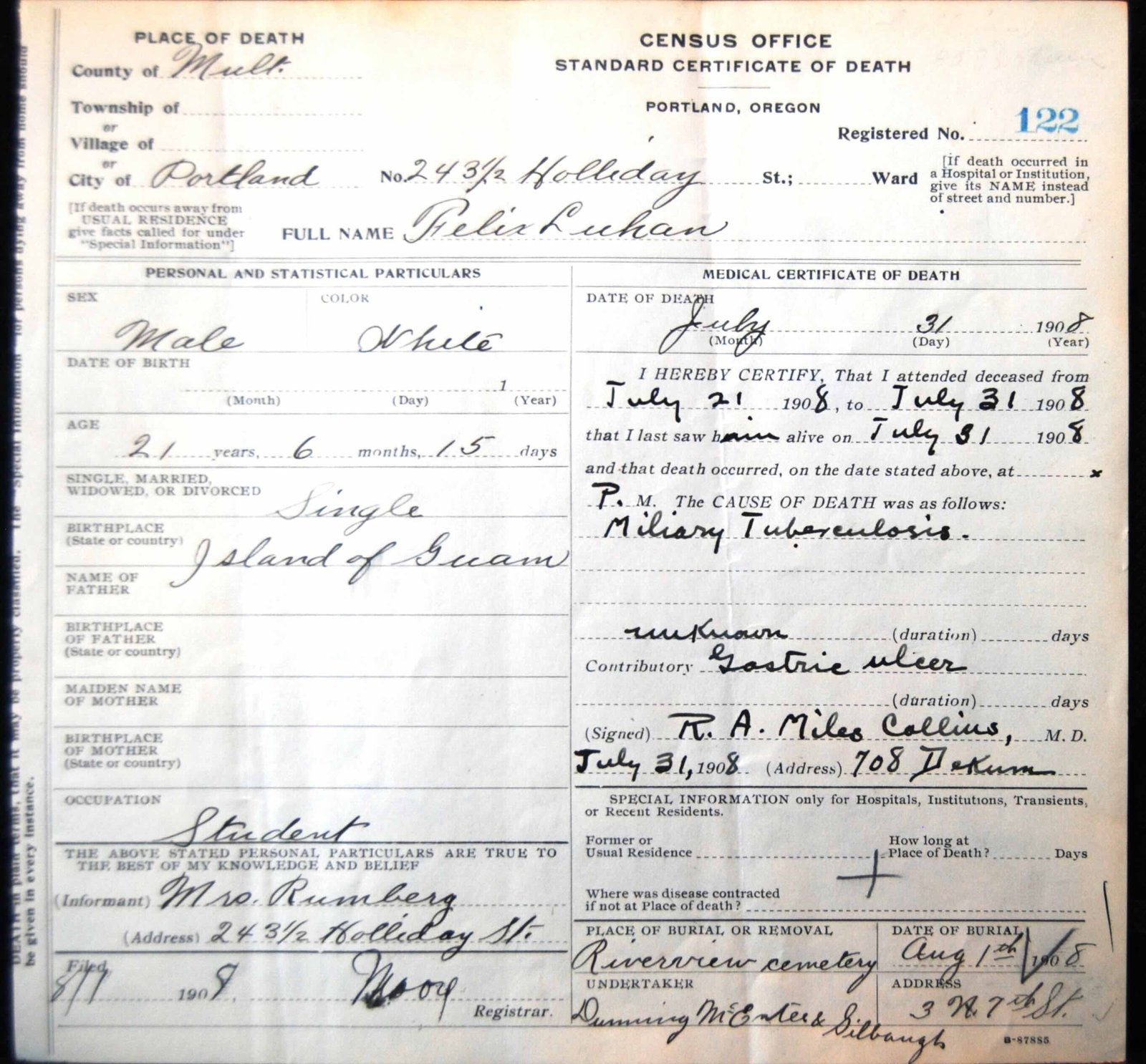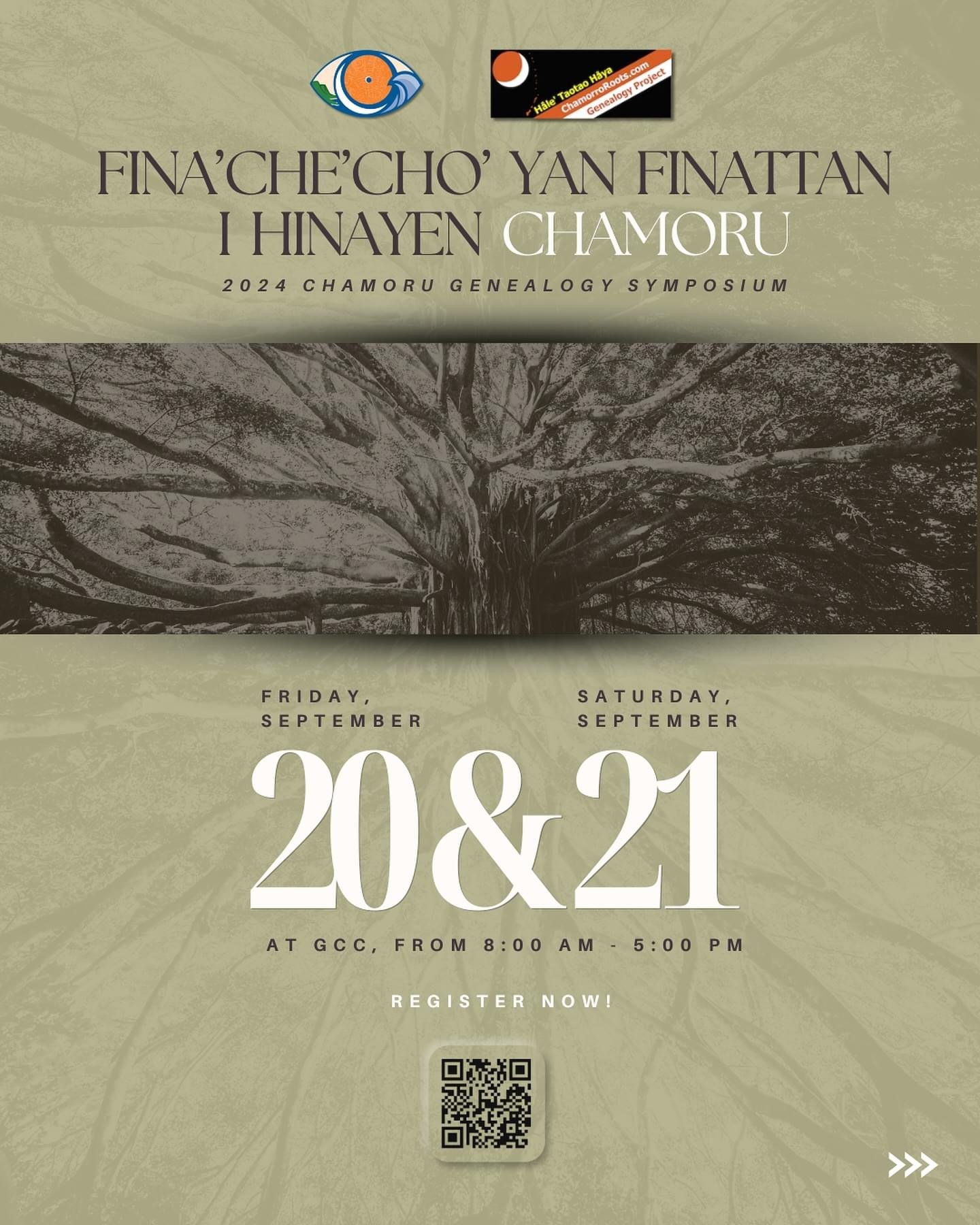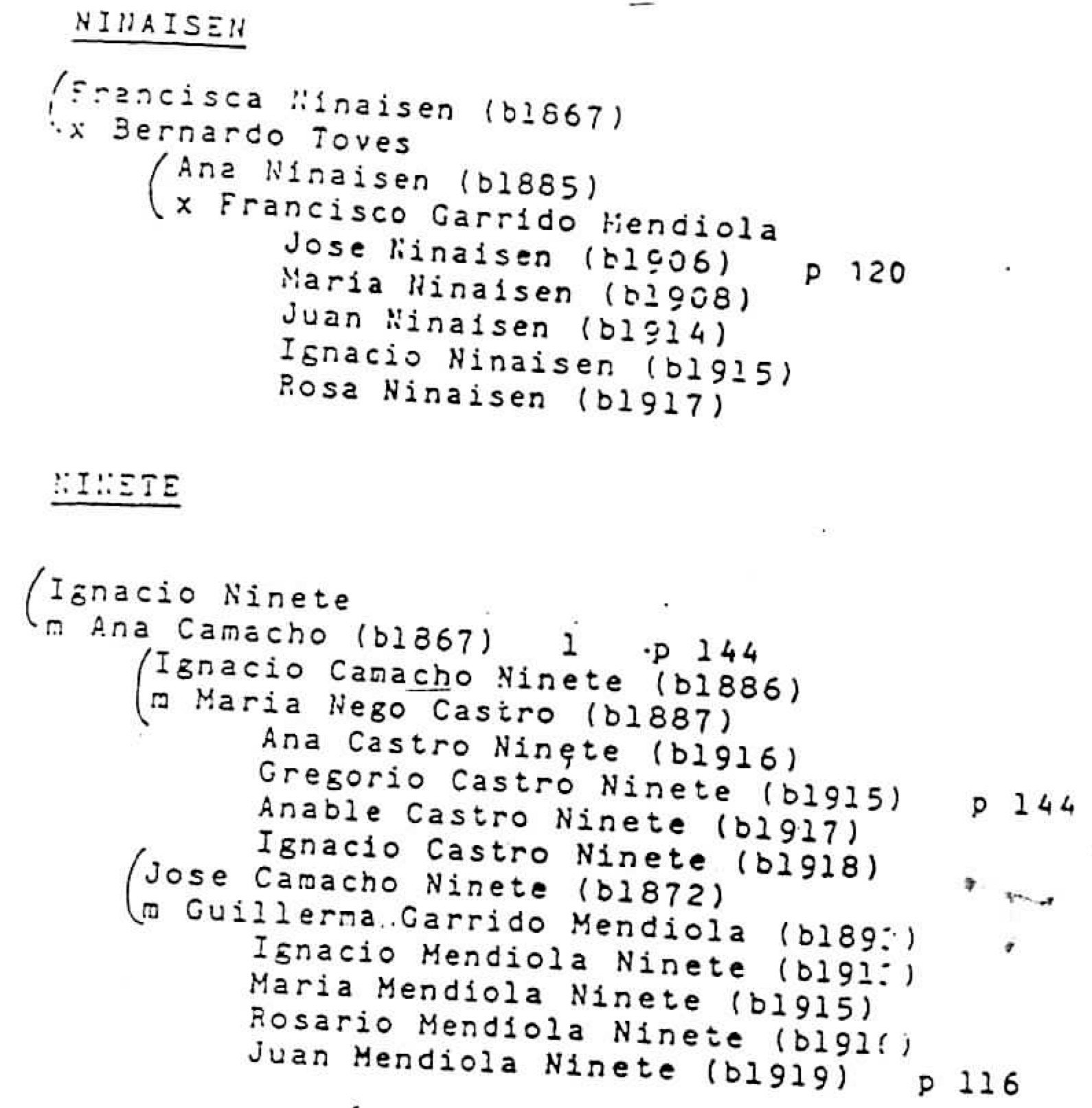Home
Felix Luhan/Lujan 1887-1908
- Details
- Written by: Bernard Punzalan

Came across the death certificate of Felix Lujan during a random search.
Can anyone confirm if this is the same person as Felix Pangelinan Lujan, manggåfan Adot.
Symposium Registration is Open!
- Details
- Written by: Bernard Punzalan

Biba Fina’che’cho’ yan Finattan i Hinayen CHamoru (2024 CHamoru Genealogy Symposium)! Register now: https://forms.gle/j4v6AV5QHGzmvffAA
The MARC Roots Project
- Details
- Written by: Bernard Punzalan

While I am not exactly sure yet when the Micronesian Area Research Center (MARC) started the Roots Project, I found a 1989 article from the Pacific Daily News written by Tambra Maddock providing some background information. The article featured Assistant Professor and MARC Librarian Albert L. Williams. “Williams, who put the information into a user friendly form, says people are interested in knowing who their ancestors are for a number of reasons.” Back then, the Roots Project contained 10,000 names in the database, was touted as “probably the largest compilation of Chamorro genealogical information in the world…” The names and data came from births, deaths and marriages taken from the Guam News Letters from 1914 to 1921, the 1897 census and the 1920 census of Agana.
2024 CHamoru Genealogy Workshop Symposium & Exhibit
- Details
- Written by: Bernard Punzalan
Unofficially Official...LOL. Will post the flyer once cleared through appropriate channels...
What: Two-day CHamoru Genealogy Work Symposium & Exhibit
Day 1: Making Connections, Genealogy Panel on Clan Names, 18th Century Census Data, Pre-1936 Judicial Records
Day 2: Making Connections, Sharing Stories, DNA as a Genealogy Tool, Kumision’s Genealogy Database and Resources
Daily: CHamoru Family Clan Exhibit: participants will display their family genealogy, photos, and other related items.
FREE and open to the public.
When: September 20-21, 2024, 8:00am -5:00pm
Where: GCC Multi-Purpose Auditorium, Guam
How: Pre-Register with the Kumision. Registration at the door will be limited to capacity. (More to come on details)
*We encourage participants to bring in family trees, photos, and documents to share and display for the Exhibit. Also, bring laptop/tablets for hands-on assistance in navigating genealogical resources.
This event is being sponsored by the Kumisión i Fino’ CHamoru yan i Fina’nå’guen i Historia yan i Lina’la’ i Taotao Tåno’ (Commission on CHamoru Language and the Teaching of the History and Culture of the Indigenous People of Guam) and in collaboration with the CHamoru Roots Genealogy Project.
Page 1 of 78

